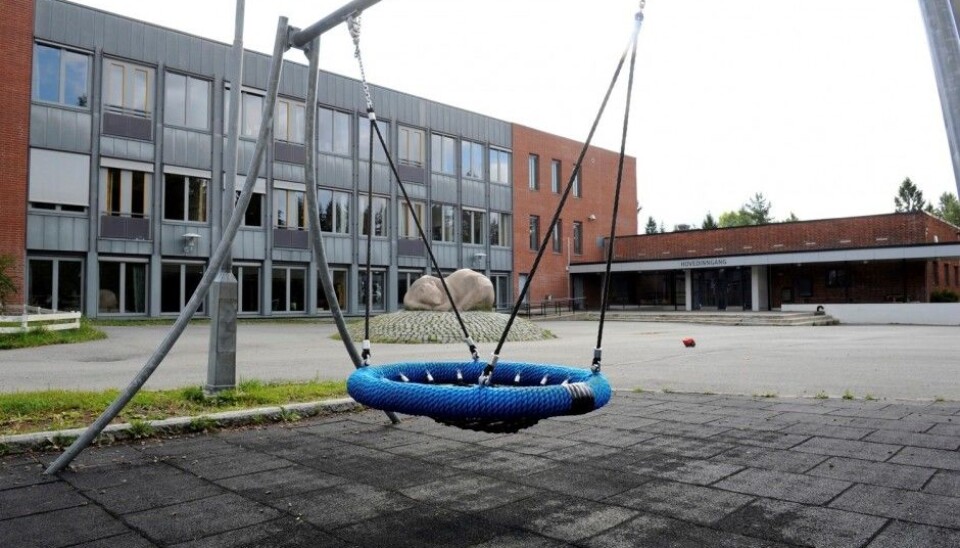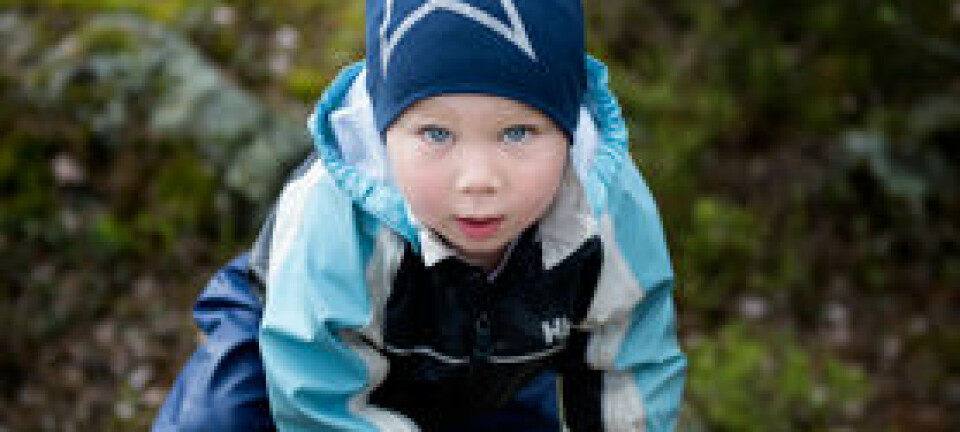
Children want challenging playgrounds
School children want to create something of their own when they play. Completed playgrounds give little room for creative activity.
Denne artikkelen er over ti år gammel og kan inneholde utdatert informasjon.
Climbing high on a structure – digging deep in the sand. Filling a pit with leaves and water. Scavenging for sticks and other natural tools from the forest. Making a secret hideout beneath the slide.
Children are creative in their interaction with outdoor playgrounds and enjoy playing a role in changing them. The Swedish researcher Märit Jansson discovered how important this is when she asked school children how they used playgrounds.
“Well-designed, safe and aesthetically pleasing things are not always interesting for children,” says the landscape architect who works at the Swedish University of Agricultural Sciences.
Not enough to do
Jansson interviewed 141 children aged 6-11 in two small Swedish towns. She asked open questions to groups of the kids regarding how they use their playgrounds.

Her intention was to find out which playgrounds they knew about in their neighbourhoods and how they played with friends. She wasn’t originally trying to get children’s perspectives about aspects of playgrounds they found lacking.
But during the interviews the children voiced their frustration with boring playgrounds.
“The older children in particular complained that there was nothing to do there. There weren’t enough challenges,” says Jansson.
“Children want to be co-builders. They want to affect the playground, enjoy physical challenges and create their own spaces on and around the play equipment and installations. Thoroughly regulated laygrounds with rubber surfaces and detailed designing are hard to change,” says Jansson.
Ask the children
The most expensive and advanced playgrounds are not always the most popular, according to the Swedish kids. The location of the playground and opportunities kids find as self-appointed subcontractors for a playground’s re-making are more important.
Playgrounds near a patch of woods or other natural settings are liked the most. At these, kids could combine nature and culture, fetch rocks and water and alter the playground to match their play.
This harmonises with other Nordic studies of the importance of challenges and playgrounds that include or are adjacent to a bit of nature.
“Sometimes I get the impression that playgrounds are built in compliance with the needs of adults, so they can keep track of the children at a safe place. Playgrounds work best for children of kindergarten age, while the older children tend to be forgotten,” says Jansson.
“Ask the children what they want before you start construction,” she urges.
Safety worries
Some of the children said there was so little to do at the playground that they started throwing rocks at the equipment out of sheer frustration.
Fears of vandalism comprise a reason why adults are sceptical when children try to alter a playground.
Adults are not always approving of changes that are part of children’s games and play.
Jansson spoke with park employees who were disgruntled as children tried to use play equipment for purposes other than intended.
Sometimes the children’s alterations undermined safety, like when they dig beneath the concrete foundations of play equipment and destabilise it.
Okay to get hurt
There are good reasons to stop such excavation, maliciously intended or not. But Jansson thinks we have become so concerned about safety that we overlooked children’s need for the thrills and challenges which help them develop.
“If we are preoccupied with safety the playgrounds become too tame and boring for the kids,” she says.
Norway has also had its share of discussions about the design of playgrounds. Should kids have the chance to bang themselves up or should they be fully protected against every contingency? For safety’s sake, swings are erected over rubber mats and installations for climbing have often simply been removed.
Yet there is a viable argument that play involving risk makes children more robust. Opponents, however, have referred to those who hold such views as “blood romantics”.
Jansson leans toward those who say that the occasional injury is not too high a price to pay for the benefit of learning to master challenges.
“Of course we don’t want to create dangerous playground environments, but a few skinned knees and elbows are part of growing up,” she says.
----------
Read the Norwegian version of this article at forskning.no
Translated by: Glenn Ostling


































